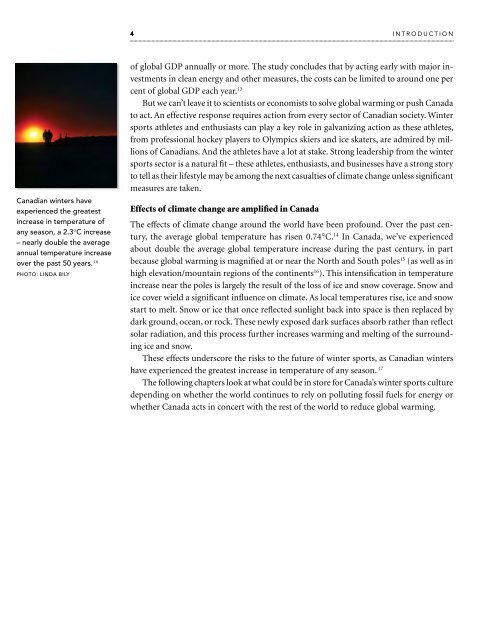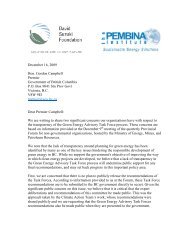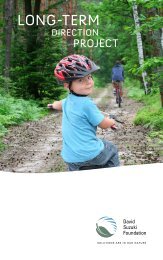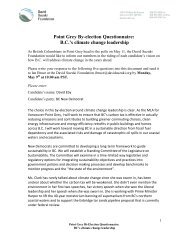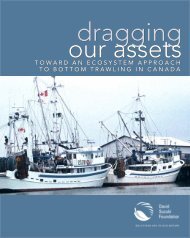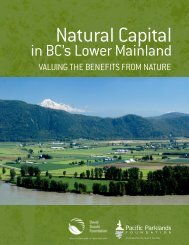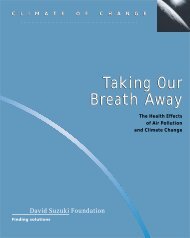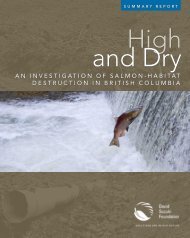On Thin Ice: Winter Sports and Climate Change - David Suzuki ...
On Thin Ice: Winter Sports and Climate Change - David Suzuki ...
On Thin Ice: Winter Sports and Climate Change - David Suzuki ...
You also want an ePaper? Increase the reach of your titles
YUMPU automatically turns print PDFs into web optimized ePapers that Google loves.
canadian winters have<br />
experienced the greatest<br />
increase in temperature of<br />
any season, a 2.3°c increase<br />
– nearly double the average<br />
annual temperature increase<br />
over the past 50 years. 18<br />
photo: linda bily<br />
4 introduction<br />
of global GDP annually or more. The study concludes that by acting early with major investments<br />
in clean energy <strong>and</strong> other measures, the costs can be limited to around one per<br />
cent of global GDP each year. 13<br />
But we can’t leave it to scientists or economists to solve global warming or push Canada<br />
to act. An effective response requires action from every sector of Canadian society. <strong>Winter</strong><br />
sports athletes <strong>and</strong> enthusiasts can play a key role in galvanizing action as these athletes,<br />
from professional hockey players to Olympics skiers <strong>and</strong> ice skaters, are admired by millions<br />
of Canadians. And the athletes have a lot at stake. Strong leadership from the winter<br />
sports sector is a natural fit – these athletes, enthusiasts, <strong>and</strong> businesses have a strong story<br />
to tell as their lifestyle may be among the next casualties of climate change unless significant<br />
measures are taken.<br />
Effects of climate change are amplified in Canada<br />
The effects of climate change around the world have been profound. Over the past century,<br />
the average global temperature has risen 0.74°C. 14 In Canada, we’ve experienced<br />
about double the average global temperature increase during the past century, in part<br />
because global warming is magnified at or near the North <strong>and</strong> South poles15 (as well as in<br />
high elevation/mountain regions of the continents16 ). This intensification in temperature<br />
increase near the poles is largely the result of the loss of ice <strong>and</strong> snow coverage. Snow <strong>and</strong><br />
ice cover wield a significant influence on climate. As local temperatures rise, ice <strong>and</strong> snow<br />
start to melt. Snow or ice that once reflected sunlight back into space is then replaced by<br />
dark ground, ocean, or rock. These newly exposed dark surfaces absorb rather than reflect<br />
solar radiation, <strong>and</strong> this process further increases warming <strong>and</strong> melting of the surrounding<br />
ice <strong>and</strong> snow.<br />
These effects underscore the risks to the future of winter sports, as Canadian winters<br />
have experienced the greatest increase in temperature of any season. 17<br />
The following chapters look at what could be in store for Canada’s winter sports culture<br />
depending on whether the world continues to rely on polluting fossil fuels for energy or<br />
whether Canada acts in concert with the rest of the world to reduce global warming.


